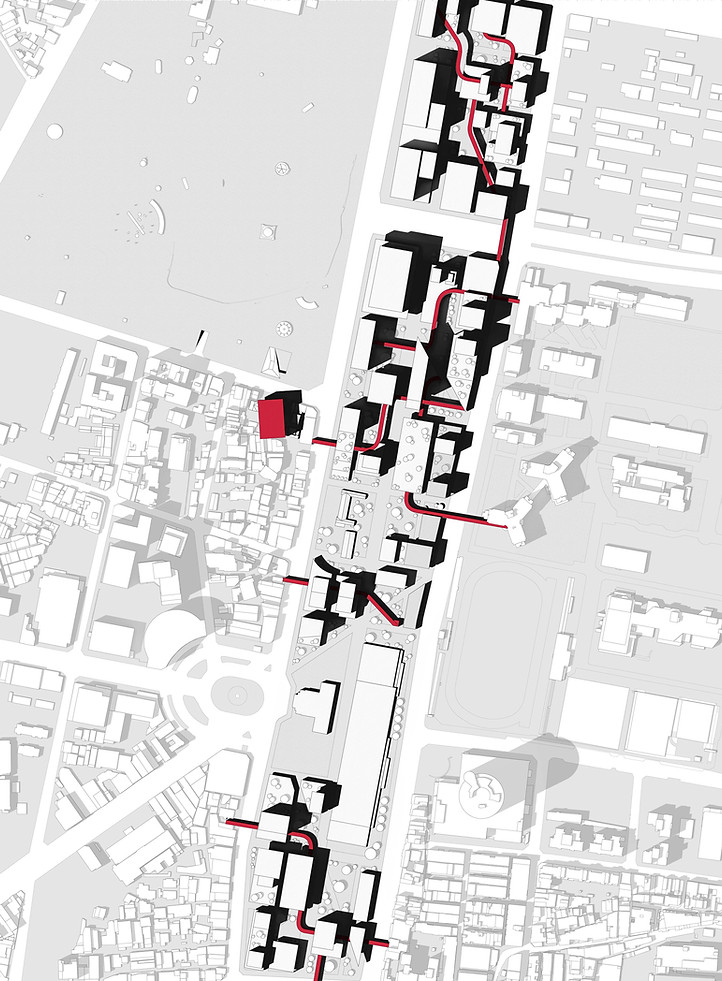The Gray Box
2024 // Academic Work
adaptive-reuse / cultural / retail / public space / historical building / gallery
Observation to Annotation
Figure ground as a method of reading and analyzing the urban fabric of the city opens new possibilities and insight. While effective in mapping public spaces in Western cities, it lacks clarity when applied to Eastern Asian cities. “A city with no plaza,” said Kisho
Kurakawa, means that the street carry out the function as the public space where activity and interaction happens.
Annotation to Experimentation
This project explores the possibilities of Asian Urbanism through reading and annotation. We focused on the sequence of activities and their interactions that shape the city, particularly human behavior in relation to public space. A city with an imaginary "plaza," or what we call the "gray" area, is central to our research.
The "gray" area is where we concentrate our study, examining its relevance and influence on humans and urban space. This results in a rich and diverse urban space within the city, making it unique and special. We aim to amplify this space and integrate it into various scales of urbanism and architecture.
Masterplan Axonometric
Thus, we introduce the "gray" area and the "gray" box. This is our manifesto for the future of Asian urbanism, opening new possibilities that maximize regional diversity and sustainable urban spaces.




Section model
Tainan Train Station Masterplan
Mapping diagram
Interior space

Gongyuan Rd. view


